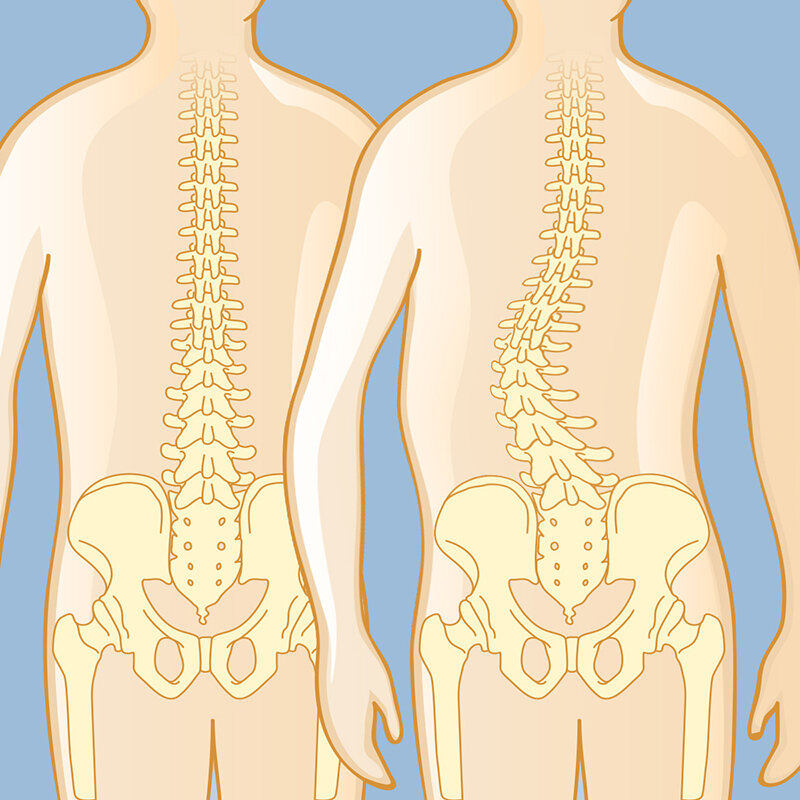3 Exercises For Scoliosis
What is Scoliosis?
Scoliosis is a condition in which the spine becomes abnormally rotated and curved to the side. The most common type of scoliosis is idiopathic scoliosis, which is where the cause is unknown. The majority of idiopathic scoliosis cases develop in adolescence, and in more females than males. The reason for this is not fully understood, but the body’s faster rate of growth during puberty may be a factor. Once an adolescent reaches skeletal maturity, a scoliosis curve that is less than 40° is unlikely to keep progressing. For this reason, a key factor in treating scoliosis is to identify the condition early on and prevent the curve from reaching 40° or more by skeletal maturity.
Scoliosis is typically a pain-free condition, however pain can occur as the spine curvature affects the surrounding muscles and joints. There may be changes in person's alignment, posture, and movement patterns which can lead to irritation and pain. Muscles that support the spine may also become imbalanced in scoliosis, leading to a loss of strength and flexibility. A person with scoliosis may notice:
Uneven shoulder height
Uneven hip height
An uneven waistline
A general sense that the 2 sides of the body don't line up
Pain in the areas surrounding the spine, including the shoulder, pelvis, and hip
Pain with specific movement or activity.
Types of Scoliosis:
Idiopathic: no identifiable cause
Congenital: caused by a defect present at birth
Neuromuscular: directly related to an underlying condition such as cerebral palsy and muscular dystrophy
Degenerative: caused by degeneration of the facet joints and intervertebral discs resulting in asymmetry of the spine
Physical Therapy for Scoliosis
Most cases of scoliosis are classified as mild scoliosis in which the curve is less than 25 degrees. Mild scoliosis can be treated conservatively with physical therapy being part of the treatment program.To treat scoliosis, your physical therapist will develop a plan of care specific to your individual needs. This may include hands-on manual therapy, range of motion exercises, functional movement training exercises, stretching, and modalities. By keeping your back and core strong, you can straighten alignment of the spine and give it more support.
Scoliosis exercises are more effective in treating smaller curvatures. When scoliosis-specific exercises are introduced early on, the greater the chances are that they can help achieve a reduction and slow progression. The larger the curvature is, the less effective scoliosis exercises will be. In cases of moderate and severe scoliosis, relying solely on scoliosis exercises for treatment won’t be enough.
3 Exercises for Scoliosis
Cat-camel (2:28 in the video below)
2. Side lying oblique crunch (3:12 in the video below)
3. Child’s pose stretch with a unilateral bias (4:07 in the video below)
Written by Daniel Le, DPT




